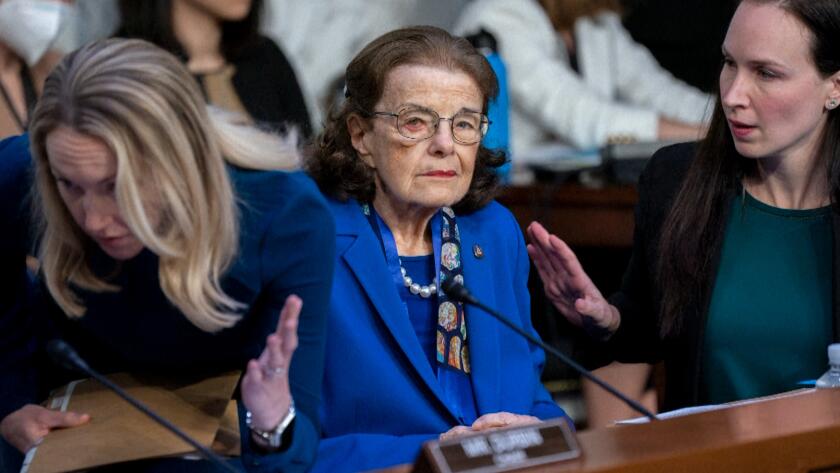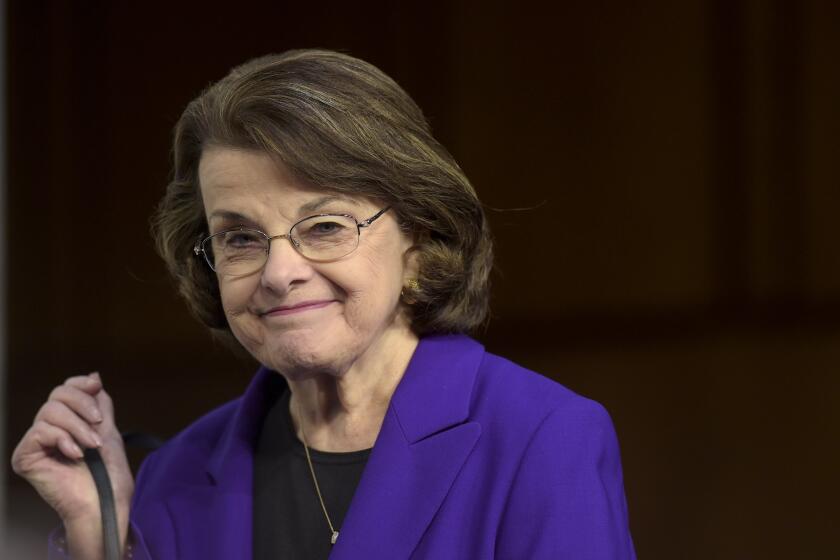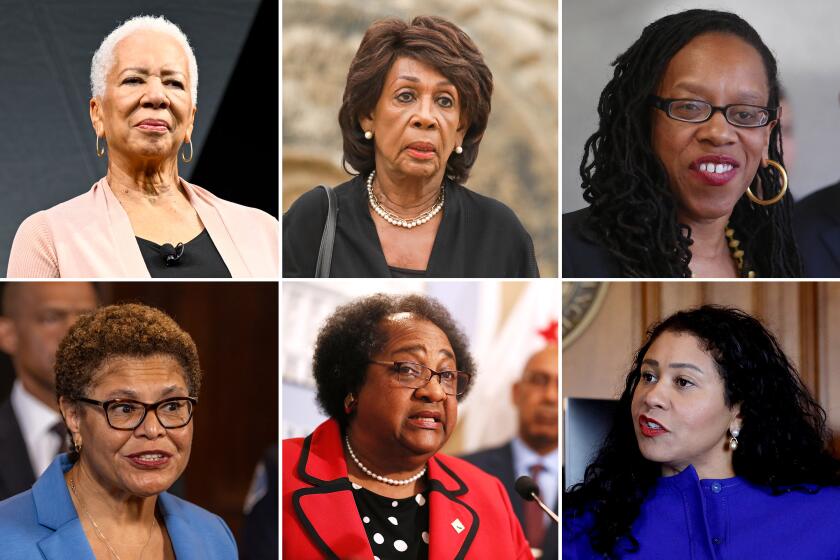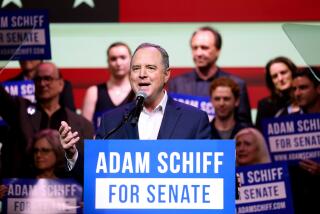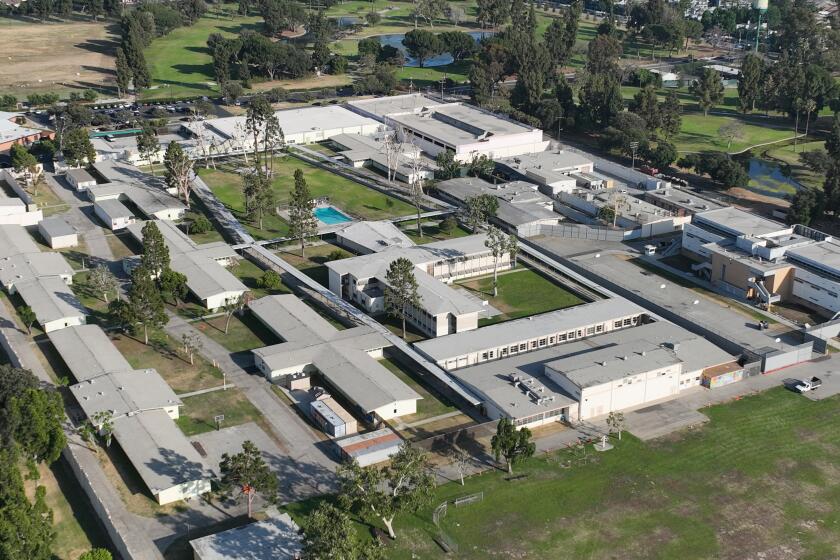Feinstein’s stubbornness kept her in office too long. But it also defined her success
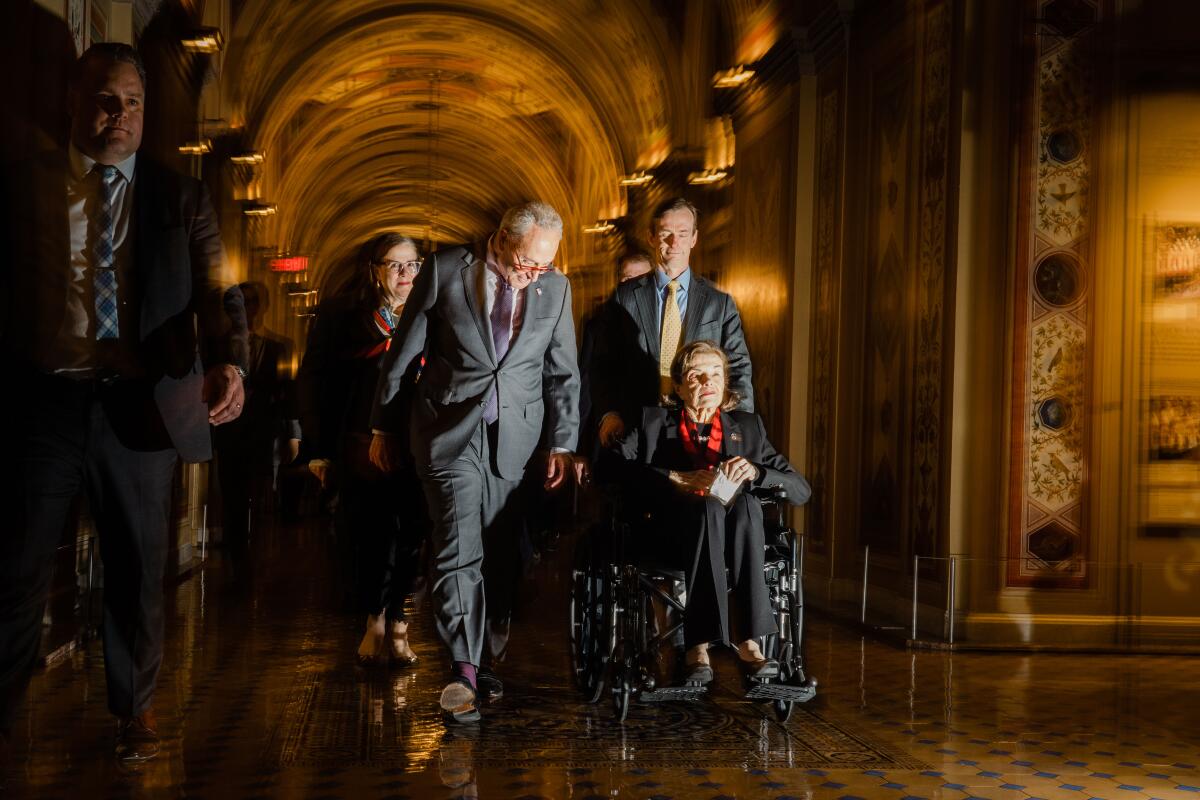
- Share via
On Thursday, Dianne Feinstein cast her final Senate vote, on a measure aimed at preventing a looming government shutdown.
Hours later, she was gone.
That last public act is a fitting one for California’s legendary U.S. senator.
Her life was devoted to politics and public service, words she used with sincerity and no hint of irony.
In truth, Feinstein really had no other life outside government, which explains why she remained in office, a shell of her old self at age 90, long after mental and physical incapacity should have forced her retirement.
- Share via
The Los Angeles Times’ Benjamin Oreskes breaks down how Gov. Gavin Newsom may decide on who will fill the late senators vacant seat and the legacy she leaves behind.
It was selfish, no doubt — though it should be noted Feinstein was reelected, handily, at age 85 when her diminished state was plain for voters to see.
There was another, more admirable side to that stubbornness and refusal to quit: a ramrod determination and unsinking resilience that girded Feinstein through a lifetime filled with maelstrom.
A nightmarishly abusive childhood. Widowhood at a relatively young age. A recall effort. An attempted assassination. Failed tries at office and a political career headed to an unremarkable end until, in a blink, it wasn’t.
Sen. Dianne Feinstein survived an assassination attempt and a mayoral recall to become the most popular politician in California for years running.
Feinstein had planned on quitting politics on the November 1978 day that San Francisco Mayor George Moscone was shot and killed along with Harvey Milk, her colleague on the Board of Supervisors. As board president, Feinstein assumed the job she had twice failed to capture on her own.
It was a cinematic moment captured in a television ad that years later catapulted her into contention for California governor. Feinstein lost that 1990 contest, narrowly, but two years later, her momentum carried her into the U.S. Senate, where she became one of the most important and consequential lawmakers the state has ever sent to Washington.
It is easy now to overlook, in Feinstein’s sad and diminished final days, the commanding and regal figure she once was.
Feinstein ruled over San Francisco like a potentate, hands on and fingernails dug in. She became, according to polls, one of the most admired women in America and nearly landed as Democrats’ 1984 vice presidential nominee.
She was a path-blazer for women in politics. It was not just aspiring to offices that once seemed off-limits. Rather, Feinstein showed the possibilities of women in power by becoming a Senate master on subjects such as crime, national defense and intelligence policy — areas once seen beyond the purview of a female lawmaker.
Key moments in Dianne Feinstein’s boundary-breaking career in California politics
She fought the National Rifle Assn. and scored a rare victory by pushing through a 10-year ban on assault-type weapons. She muscled through legislation protecting a vast swath of the California desert. She brought the CIA to heel with a report condemning its detention and interrogation practices.
Covering her steel core was a thick skin. (“Never let them see you cry” was the advice Feinstein gave and the title veteran political reporter Jerry Roberts used for his 1994 biography.)
Despite her San Francisco pedigree, Feinstein was despised by many on the political left, who found her personally too prissy and politically too centrist. She made her entry on the state political scene being booed at a Democratic convention for defending the death penalty. (Feinstein eventually changed her stance.) Disdainful liberals were among the loudest voices seeking her exit when she fell ill.
It was a sign of changing times, which were not kind to Feinstein, and not just because of the physical and mental infirmities that came with her advanced age.
With the death of Sen. Dianne Feinstein, Gov. Gavin Newsom now must decide who will fill her U.S. Senate seat until the next election.
Politics is much different than when she started. There is less room and inclination for bipartisanship. There is a performative aspect — tweets and stunts and show-offy antics aimed not at passing legislation or accomplishing very much of substance but rather scoring points and “owning” the opposition.
That was neither Feinstein’s strength nor inclination. She regularly infuriated fellow Democrats by reaching across the aisle to work with Republicans.
“Her political trademarks were pragmatism, independence and moderation. Three qualities in short supply in our current toxic political atmosphere,” Roberts said Friday.
Soon after President Trump took office, Feinstein caught unshirted hell from the left for suggesting — just maybe, in a make-the-best-of-it concession — that if Trump performed a 180 and changed, he might make a good president. It was a triumph of hope over experience, but showed her willingness to at least give the other side the benefit of the doubt.
Those who knew her well — and few knew Feinstein better than Roberts — insisted she would never bow to pressure, however strong and unrelenting, and leave the Senate before she chose. Indeed, in characteristic fashion, Feinstein departed on her own terms, suddenly and, despite her widely chronicled ailments, unexpectedly.
She remained determined, unwavering and, for good or ill, fixed on her course to the very end.
More to Read
Get the latest from Mark Z. Barabak
Focusing on politics out West, from the Golden Gate to the U.S. Capitol.
You may occasionally receive promotional content from the Los Angeles Times.

